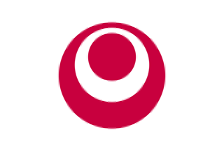| |
 |
 |
|
| Subject |
Okinawa |
Japan |
Where are we? |
| Stances |
Higher so good for moving and therefore self defence. |
Lower so not so practical in a fight but builds strength. |
Definitely in the Okinawan camp for this as Shukokai emphasises hip movement in all techniques which is hampered by long deep stances. |
| Why v How |
Why – ‘imi’ is meaning with a concentration on ‘bunkai’. |
How – less about understanding and more about harnessing of bio-mechanics. |
The founder of Shukokai based the style on bio-mechanics even before that term was really used, so we are strongly in the Japanese camp. |
| ‘Osu’ |
Not used as considered rude when directed towards a higher grade. They use ‘Hai’ as yes instead. |
We use the term though far less frequently than when I started. |
We are slightly leaning to Japanese with this. |
| Training as a sport |
In Okinawa karate is more of a lifestyle choice and cultural identity that grows with you as you age. |
The Japanese have embraced sport karate with world champions in both sparring and kata. Unfortunately you can’t remain competitive due to age robbing you of physical ability. |
For a number of reasons, not necessarily deliberate, we are firmly in the Okinawan camp. |
| ‘Chunkuchi’ v ‘Kime’ |
‘Chunkuchi’ is about expansion not contraction where a technique isn’t frozen but rather trying to hit through an opponent. |
‘Kime’ is about tensing the body at the moment of impact. |
We were definitely in the Japanese camp on this point for many years but are now moving towards an Okinawan philosophy as we practice striking multiple pads flowing between techniques and harnessing forces available to us. |
| ‘Dojo’ spirit |
Never afraid to ask questions in a relaxed place of learning. |
Much more serious approach to obedience, time keeping and formal shows of respect. |
My own background was definitely a Japanese approach in this area but I would like to think the club is now firmly in the Okinawan camp. |
| ‘Kobudo’ – using weapons |
Okinawan karate students still practice using weapons on the basis of knowing how to use them allows you to better defend yourself from them. |
Weapons don’t fit the empty handed principles so aren’t trained in. |
We’re definitely with the Japanese with this. |
| ‘Hojo Undo’ – physical training |
In an Okinawan club you would expect to use traditional equipment to strengthen your body. |
In a Japanese school you would use long stances, repetition and attentional to detail to build strength. |
Whilst my background is firmly in the Japanese camp the club doesn’t really fit in either camp. We don’t have the time to spend on physical strength training as we are focussing on skills. |
| Range of engagement |
Okinawan karate is designed to be done at close range and incorporates grabbing and attacking joints. |
The Japanese karate is designed to keep your opponent at distance. |
Once again my training was in the Japanese camp but over time the club has become firmly settled in the Okinawan camp. |
| Less is more |
The Okinawans trained in small groups allowing a very individualistic approach to training. |
The training in Japan was a mass participation activity with exaggerated techniques which were easy to see for both students and instructors. |
As we are a small club we are definitely in the Okinawan camp on this. |




